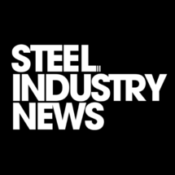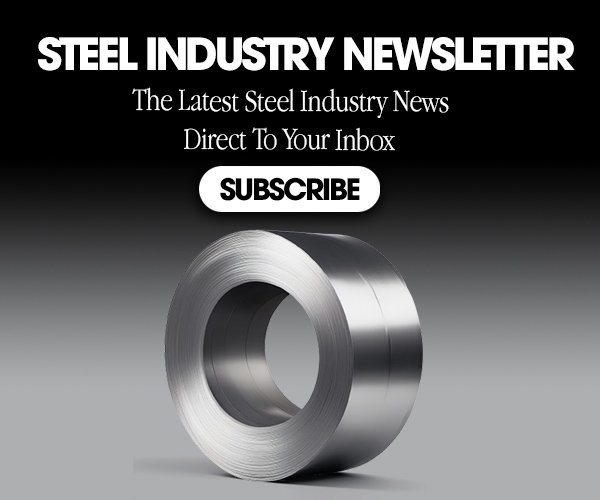Nucor Corporation, America’s largest steel producer, has maintained its hot-rolled coil (HRC) base price at $930 per short ton for the third consecutive week – a significant departure from its aggressive pricing strategy earlier this year. This unprecedented plateau follows a remarkable run of eight consecutive price increases that pushed HRC rates up by $175 since early 2025. Meanwhile, industry rival Cleveland-Cliffs has charted a different course, boldly raising its May spot price to $975 per ton. This pricing divergence between America’s steel giants offers a fascinating window into current market conditions, strategic positioning, and what might lie ahead for steel prices in the coming months.
The Evolution of Nucor’s Pricing Strategy in 2025
The steel industry kicked off 2025 with cautious optimism after a challenging 2024. Nucor started the year with modest pricing ambitions, setting its HRC Consumer Spot Price (CSP) at $760 per short ton in late January. This represented the company’s first price adjustment since November 2024, signaling renewed confidence in market conditions. What followed was nothing short of remarkable – a methodical march upward that saw prices climb steadily week after week.
By early March, Nucor had boosted its list price to $900 per short ton, representing a stunning $140 increase in just over a month. The momentum continued through mid-March when the company implemented yet another hike, reaching $930 per ton on March 17th. This aggressive pricing campaign reflected a perfect storm of favorable conditions: rising scrap costs, anticipated Section 232 tariffs, and temporary supply constraints.
The turning point came on April 14th, when Nucor made a subtle but significant move – reducing its HRC price by $5 to $930 per ton after briefly touching $935. This minor pullback, followed by two weeks of price stability, marks the first meaningful pause in Nucor’s upward pricing trajectory. The current price of $930 has now held steady for April 14th, 21st, and 28th – creating a three-week plateau that has caught the attention of market watchers.
HRC Price History: Nucor’s Remarkable Ascent
| Date | Nucor HRC Base Price ($/short ton) | Change | Market Context |
|---|---|---|---|
| Jan 27, 2025 | $760 | +$10 | First change since Nov 2024 |
| Feb 12, 2025 | $825 | +$65 | Rapid acceleration begins |
| Mar 3, 2025 | $900 | +$75 | Eighth consecutive increase |
| Mar 17, 2025 | $930 | +$30 | Peak momentum |
| Apr 7, 2025 | $935 | +$5 | Final increase |
| Apr 14, 2025 | $930 | -$5 | First decline in 2025 |
| Apr 21, 2025 | $930 | $0 | Holds steady |
| Apr 28, 2025 | $930 | $0 | Third week at plateau |
Note: California Steel Industries (CSI), Nucor’s West Coast subsidiary, maintains a $60 premium, with current pricing at $990/ton.
Decoding the Pricing Pause: Four Potential Explanations
Nucor’s decision to hold prices steady for three consecutive weeks represents a strategic pivot from its aggressive first-quarter approach. Several factors likely influenced this calculated pause:
1. Softening Demand Signals
The most compelling explanation for Nucor’s pricing restraint lies in recent demand indicators. Steel Market Update’s Demand Index recently dipped into contraction territory in late April after reaching a four-year high in February. This cooling demand reflects growing uncertainty among steel consumers, many of whom accelerated purchases earlier in the year to get ahead of anticipated tariffs and price increases. With service center inventories now adequately stocked, urgent buying has subsided, reducing pricing power for producers.
2. Financial Performance Pressures
Nucor’s recent earnings guidance provides another critical clue. The company expects first-quarter earnings of just $0.45 to $0.55 per diluted share – down dramatically from $3.46 per share in Q1 2024. This 84% year-over-year decline signals significant margin compression despite higher selling prices. The company specifically noted decreased earnings in both steel products and raw materials segments due to lower selling prices and reduced DRI facility margins. This financial reality check likely tempered Nucor’s pricing ambitions.
Please note Nucor reported adjusted EPS of $0.77 for Q1 2025, surpassing estimates by $0.11, while revenue reached $7.83 billion, exceeding expectations by $540 million after our initial publication.
3. Strategic Market Positioning
Nucor’s pricing approach reflects its distinct business model compared to integrated competitors like Cleveland-Cliffs. As a predominantly electric arc furnace (EAF) producer relying heavily on scrap metal, Nucor maintains greater operational flexibility. This allows the company to prioritize market share and capacity utilization over absolute pricing maximization. By holding prices at $930 while Cliffs pushes higher, Nucor potentially seeks to maintain volume advantage through a modest price discount.
4. Raw Material Cost Stabilization
After months of relentless increases, scrap metal prices have shown signs of stabilization in April, reducing cost pressure on EAF producers like Nucor. The company’s vertically integrated operations, including direct reduced iron (DRI) facilities, provide some insulation from scrap market volatility, enabling more consistent pricing. This raw material stability has allowed Nucor to maintain margins without further price increases.
The Competitive Landscape: Cleveland-Cliffs Charts Its Own Course
While Nucor has pressed pause on price increases, Cleveland-Cliffs has adopted a markedly different approach. The integrated steelmaker raised its May spot price to $975 per ton – a substantial $75 jump from April levels. This divergence highlights fundamental differences in business models, customer bases, and strategic priorities.
Cleveland-Cliffs, with its blast furnace operations and greater exposure to automotive contracts, operates on different cost structures and pricing philosophies than Nucor. Cliffs typically offers longer lead times (8+ weeks compared to Nucor’s 3-5 weeks) and focuses more heavily on contract business than spot market transactions. This allows Cliffs to establish higher benchmark prices while serving customers with less price sensitivity and more predictable demand patterns.
The $45 spread between Cliffs’ $975 May price and Nucor’s current $930 spot price represents one of the largest gaps between the two producers in recent years. This pricing delta creates a fascinating market dynamic where buyers must weigh price advantage against lead time, reliability, and product specifications.
Temporary Plateau or New Normal? Analyzing Price Trajectory
The critical question facing steel market participants is whether Nucor’s three-week price hold represents a temporary pause before renewed increases or the beginning of a longer stabilization period. Several indicators point toward potential future movement:
Signs Pointing to Renewed Increases
- Tariff Implementation: The full impact of recently announced Section 232 tariffs remains uncertain, with potential retaliatory measures from trading partners creating upward price pressure as imports become less competitive.
- Seasonal Strength: Historically, May through July represents peak seasonal demand for steel in construction markets, potentially providing pricing support as project activity accelerates.
- Production Discipline: Major producers, including Nucor, have demonstrated supply-side restraint by maintaining reasonable lead times (3-5 weeks) rather than flooding the market with capacity.
- Global Price Movements: European hot-rolled coil prices have risen above US levels for the first time in months, potentially reducing import competition and supporting domestic pricing power.
Signs Suggesting Continued Stabilization
- Inventory Levels: Many service centers and OEMs accelerated purchases earlier in the year, creating adequate inventory buffers that reduce near-term buying urgency.
- Manufacturing Slowdown: Recent manufacturing data shows modest contraction in key steel-consuming sectors, potentially limiting price upside.
- Import Competition: Despite tariff threats, offshore HRC prices remain substantially below US domestic levels, creating pricing ceilings in certain markets and applications.
- Price Resistance: After absorbing $175/ton in increases since January, buyers have demonstrated growing resistance to further hikes, forcing producers to prioritize volume over additional price gains.
What May Holds: Forecasting Nucor’s Next Move
The coming weeks will prove pivotal for Nucor’s pricing strategy as May order books open and market conditions evolve. Based on current indicators, three scenarios emerge as most likely:
Scenario 1: Modest May Increase (+$20-40/ton)
Nucor could follow Cleveland-Cliffs’ lead with a more moderate increase, perhaps targeting $950-970 per ton. This would maintain its traditional discount to Cliffs while responding to seasonal demand improvements. Probability: Moderate (40%)
Scenario 2: Extended Price Stability (±$5/ton)
Continued price stability through May would signal Nucor’s prioritization of volume and market share over absolute price maximization. This scenario becomes more likely if demand indicators remain soft or inventory destocking accelerates. Probability: Highest (45%)
Scenario 3: Price Correction (-$10-30/ton)
If demand conditions deteriorate further or import competition intensifies, Nucor might implement a strategic price reduction to stimulate buying activity and maintain mill operating rates. This scenario, while least likely, cannot be dismissed given recent earnings pressures. Probability: Lowest (15%)
Strategic Implications for Steel Buyers and Market Participants
Nucor’s pricing pause creates both challenges and opportunities for various stakeholders in the steel value chain:
For Distributors and Service Centers
The current pricing environment demands nimble inventory management and strategic purchasing decisions. With the significant spread between domestic and import prices, selective import buying remains attractive for non-time-sensitive applications. However, Nucor’s competitive lead times (3-5 weeks) and reliability value proposition still justify premium pricing for many applications.
Service centers should consider implementing “laddered” procurement strategies that blend spot market purchases at current levels with selective forward buys against potential May increases. The $45 spread between Nucor and Cleveland-Cliffs also creates arbitrage opportunities for distributors who can balance delivery timing against price advantage.
For OEMs and End Users
Manufacturing companies should view the current pricing plateau as a potential opportunity to secure favorable terms before potential May increases. With steel representing 15-30% of finished good costs for many products, the current pricing stability offers a chance to lock in predictable input costs during a period of broader inflationary pressure.
The regional pricing differential – with California Steel Industries maintaining a $60/ton premium over other Nucor facilities – also suggests opportunities for geographic arbitrage in supply chain planning. East-to-West shipments may prove economical despite transportation costs for companies with flexible manufacturing footprints.
For Investors and Market Analysts
Nucor’s pricing decisions provide valuable insights into both company-specific dynamics and broader industry trends. The company’s $428 million return to shareholders through share repurchases and dividends in Q1 2025 demonstrates confidence in long-term fundamentals despite near-term margin pressures. Investors should closely monitor May pricing announcements as indicators of management’s view on market strength and competitive positioning.
The divergent strategies between Nucor and Cleveland-Cliffs highlight different approaches to balancing volume, price, and market share – creating interesting comparative analysis opportunities for steel sector investors.
Conclusion: Navigating the Steel Price Inflection Point
Nucor’s unprecedented three-week price hold at $930 per ton marks a significant inflection point in the 2025 steel market narrative. After a remarkable run of eight consecutive increases that pushed prices up $175 since January, this plateau signals changing market dynamics that require careful navigation by all stakeholders.
While Cleveland-Cliffs’ move to $975 for May suggests continued upward potential, Nucor’s more measured approach indicates growing recognition of demand challenges and buyer resistance. The coming weeks will reveal whether this pause represents the end of the current upcycle or merely a brief respite before renewed increases.
For steel consumers, the current environment offers a valuable opportunity to evaluate procurement strategies, inventory positions, and price risk management approaches. The significant spread between domestic and import prices, coupled with divergent strategies among major producers, creates both challenges and opportunities for strategic buyers.
As the steel industry enters its traditionally strong season, all eyes will be on Nucor’s early May pricing announcements to determine whether the $930 plateau represents the new normal or merely a temporary resting point on a continued upward trajectory.
Disclaimer: This article is not financial advice or a forecast. We’re simply exploring thought-provoking scenarios and examples to help you better understand the evolving steel market landscape. Always consult with a qualified professional before making any business or investment decisions.
Check out some of our other recent articles on the subject:
- Nucor’s Six-Week Price Surge: What It Signals for the Steel Market
- Nucor Increases Steel Prices Again
- Steel Industry and Manufacturing Demand: Understanding the Critical Decline in HVAC and Agricultural Equipment Sectors in 2025
- Steel Prices in November 2025: Market Dynamics, Price Drivers, and Industry Outlook
- The Dodge Momentum Index October 2025: Understanding Commercial Planning Momentum and Its Impact on Construction Spending
Be sure to subscribe to the Steel Industry Email Newsletter to get the latest steel news delivered straight to your inbox!
Whether you choose our free subscription or upgrade to the premium version, your support helps us cover operational costs and continue providing the latest Steel Industry News at no charge.









